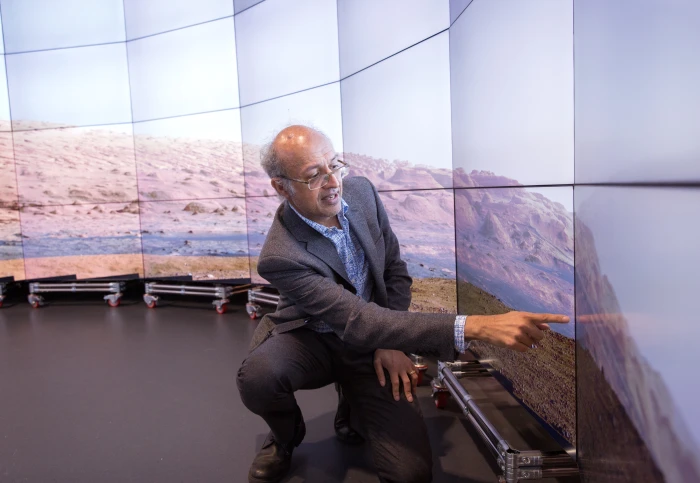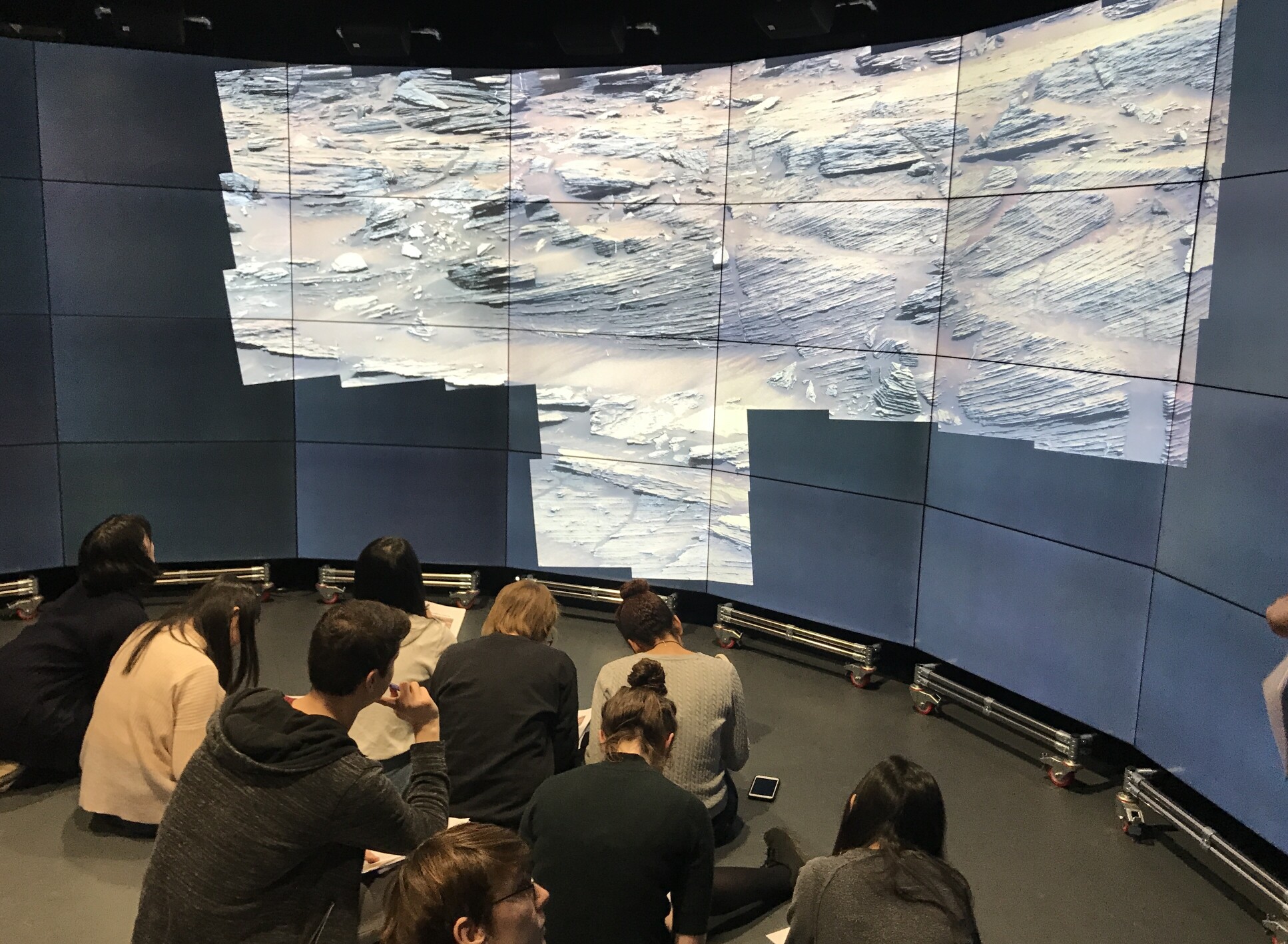Data Observatory allows students to embark on ‘field trips’ to Mars


Imperial’s Data Observatory allows students to explore high-resolution images from Mars through group-based exploration akin to any other field trip.
The ‘field trips’ to Mars are led by Professor Sanjeev Gupta from the Department of Earth Science and Engineering and are held in the Data Observatory facility – designed, built, and housed in the Data Science Institute.
The Data Observatory is a semi-circular, floor-to-ceiling display consisting of 64 screens, 313 degrees of visual coverage and over 132 million pixels.
Professor Gupta uses the facility to analyse high-resolution images of the Martian landscape from the NASA Curiosity and Perseverance rover missions, on which he is science team member.
"Exploring Mars in the Data Observatory provides an extraordinary learning experience for students – they get to explore extra-terrestrial landscapes and rock outcrops at a life-like scale. It’s the closest we can get to being there currently.” Professor Sanjeev Gupta Department of Earth Science and Engineering
These extensive datasets provide remarkable resources to teach undergraduate and graduate students about geological concepts and planetary geology.
According to Professor Gupta: "Exploring Mars in the Data Observatory provides an extraordinary learning experience for students – they get to explore extra-terrestrial landscapes and rock outcrops at a life-like scale. It’s the closest we can get to being there currently.”
Professor Gupta presented a short paper on ‘Fieldwork teaching on Mars using a Large-Scale Visualisation System’ at the Europlanet Science Congress 2024, published in partnership with Research Fellow and Data Observatory Team Lead Dr Ovidiu Serban, Systems Engineer in Large Scale Data Visualisation Brython Caley-Davies from the Data Science Institute, Post-doctoral Research Associate Dr. Robert Barnes and PhD student Alexander Jones from the Department of Earth Science and Engineering.

Field trips to Mars
The very large-scale display system in the Data Observatory enables a combination of self-exploration and guided learning for up to 25 students in a collective environment – much like a real-world field trip on Earth.
Although the images of Mars represent a rich source of data for geologists and planetary scientists, examining their content is significantly enhanced in the Data Observatory.
Rather than zooming in and out of an image as you would do on a computer screen, the large display allows students to ‘walk around’ the Martian rock outcrop, looking up close at small details whilst allowing students to get a sense of the wider picture. This ‘big picture’ context is often lost when interrogating the images on a smaller screen.
Therefore, making the ‘trip’ to the Data Observatory is of enormous learning benefit for geology students. Armed with their field notebooks, students typically explore 4-5 images during each educational session and are able to explore and sketch images of geomorphic and sedimentary features on Mars, just as they would for any other field trip.
Immersive large-scale data visualisation
Scalable-resolution display environments such as the Data Observatory, are evolving into potent tools for joint data exploration and decision-making.
However, the effective operation of these platforms depends heavily on specialised middleware – (also known as ‘software glue’, middleware is a type of computer software program that provides services to other software applications).
Existing solutions often fall short in this domain, particularly in supporting scalable data visualisation rendering effectively.
To address this, the Data Observatory team at Imperial developed the Open Visualisation Environment (OVE), an innovative, modular and open-sourced middleware designed to overcome these limitations and to allow for easy and effective large-scale data visualisation.
The facility has limitless possibilities for extracting new information and insights about the universe, including enabling the simulation of field excursion experiences in areas not currently accessible to humans.
-
‘Fieldwork teaching on Mars using a Large-Scale Visualisation System’ by Gupta et al., for the Europlanet Science Congress 2024, accepted in ODAA6 – Innovative planetary sciences outreach and dissemination tools.
Article text (excluding photos or graphics) © Imperial College London.
Photos and graphics subject to third party copyright used with permission or © Imperial College London.